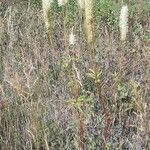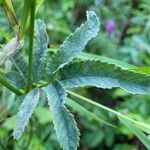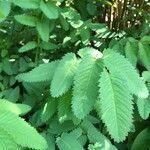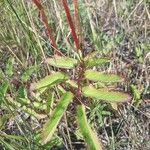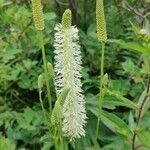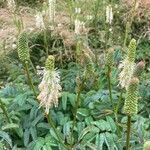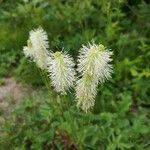A perennial plant. It grows 1.2-1.8 m high and 60-90 cm wide. The leaves are pale green. They are divided into leaflets along the stalk. The flowers are bottle brushes and are slender and white or pink. They are carried on erect stems. The flower heads are 5-15 cm long.
